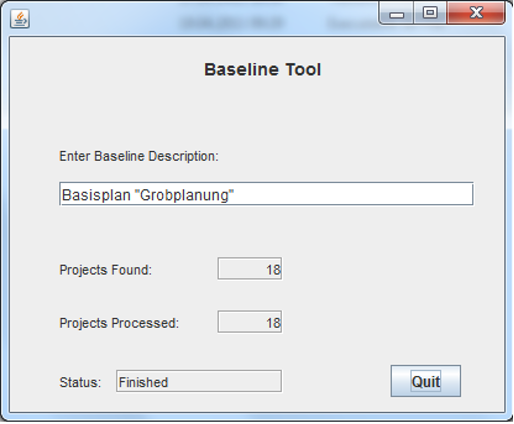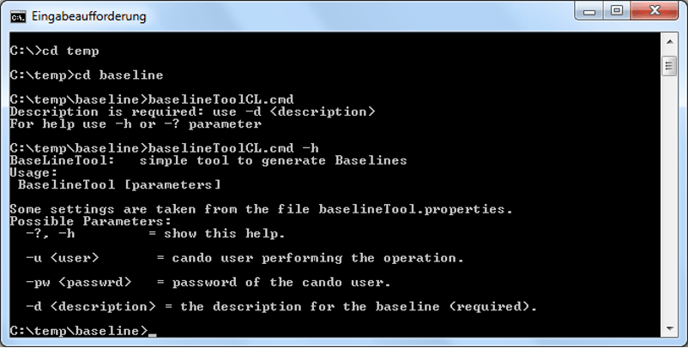How does central baseline creation work, and what is the Baseliner?
The Baseliner is a tool within the Can Do software that allows a Can Do administrator to create new baselines for all projects simultaneously.
The specific permissions of the admin user do not matter: it does not matter whether the user is assigned to the project as a project manager, resource, or viewer — they can immediately create a new baseline for the project using the Baseliner function. However, baselines cannot be created for archived projects or for those used solely as templates.
To use the Baseliner, a local Baseline directory must first exist (e.g., under C:/temp). It contains, among other things, the file BaselineTool.jar or baselineToolwithGUI.cmd.

Using the graphical interface:
Start: Double-click on BaselineTool.jar or baselineToolwithGUI.cmd.
Login: Enter login credentials as you would for the Can Do client (see screenshot).

Baseline Description: In the next window, you can enter a description for the new baseline (e.g., “Baseline Rough Planning”).

Project Detection: In the “Baseline Tool” window, the number of found projects (Projects Found) to which the user has access rights and the number of projects for which a baseline has already been created are displayed. By clicking the Start button, baselines are created for the listed projects (Projects Found). The status changes from “Ready” to “In Progress” once the Start button is clicked, and the baseline creation process begins.
Completion: After running the Baseliner function, the number of found projects (Projects Found) and processed projects (Projects Processed) should match, and the status is automatically set to “Finished” (see screenshot). The user can close the window by clicking the Quit button. For each of the selected projects, the created baseline will include the description “Baseline Rough Planning.”

Using the command line:
Alternatively, the Baseliner can be started via the command-line tool baselineToolCL.cmd, for example, if no GUI access is available. In this case, login credentials and the baseline description are passed as parameters.

Additional Notes:
-
Configuration: Login credentials and technical settings such as
routerAddressorrouterCommandSenderPortare stored in thebaselineTool.propertiesfile.
If the credentials (username and password) are entered in the DOS window, they will be used instead. The credentials stored in the baselineTool.properties file will no longer be current.
-
Logging: The file
BaselineInfo.logdocuments the technical process. -
Audit Security: All created baselines are audit-proof and cannot be deleted from within the client.
